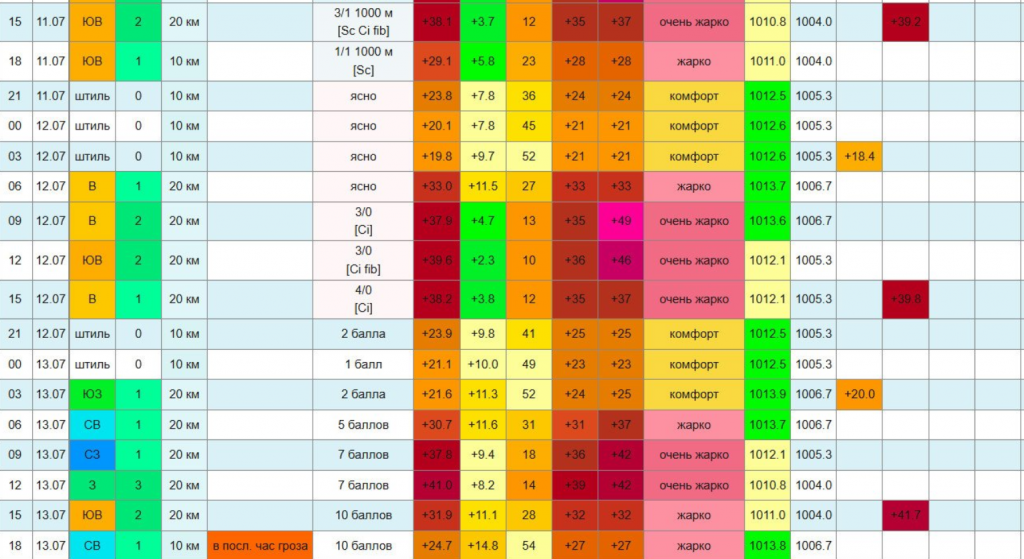
Ukraine has just experienced one of the most extreme heat events in its meteorological history. On Sunday, July 13, the city of Luhansk in eastern Ukraine recorded a staggering +41.7°C, setting a new national record for the hottest July day ever observed in the country.
This extraordinary temperature exceeds all previously recorded July highs and stands just 0.3°C below Ukraine’s all-time national record of +42.0°C, registered in 2010. With weeks of summer still ahead, this record is a stark warning of how extreme and prolonged heatwaves are increasingly affecting Eastern Europe.
Luhansk, located in the dry lowlands near Ukraine’s eastern border, has seen its share of summer heat, but Sunday’s value marks unprecedented territory. The city had already recorded +39.2°C earlier in the week, but the latest surge — driven by a powerful ridge of high pressure, clear skies, and Saharan air advection — pushed conditions into record-breaking territory.
Across the region, other cities also endured searing heat. Kherson approached +40°C, while Izium set its own local record of +39.9°C, and Ivano-Frankivsk in western Ukraine reached +37.0°C, just 0.1°C below its July record and 0.2°C from its all-time high. Moldova, too, saw widespread temperatures of +39.0°C or more, as this vast heat dome continues to affect a broad swath of Eastern Europe.
What makes this July heatwave particularly alarming is its intensity, reach, and duration. Ukraine typically experiences its highest temperatures in late July to early August, making this mid-July record even more exceptional. Meteorologists warn that more records may still fall as the heat persists into the week.
The impacts are severe: local health authorities are reporting a rise in heat-related illnesses, energy consumption has spiked, and agriculture — particularly in southern and eastern oblasts — faces crop stress and water shortages. Vulnerable populations, including the elderly and outdoor workers, are especially at risk.
This event reinforces the growing reality that Ukraine’s climate is changing, with heatwaves becoming more frequent, more extreme, and more dangerous. As the country breaks temperature records once thought untouchable, the need for adaptation and early warning systems becomes more urgent than ever.
Ukraine has now officially entered the list of European nations experiencing record-shattering July temperatures in 2025, alongside France, Norway, Ireland, and the UK, as climate extremes continue to intensify across the continent.

Source: https://x.com/extremetemps/status/1944667750179258379/photo/2


























